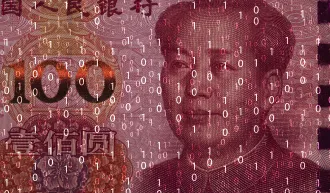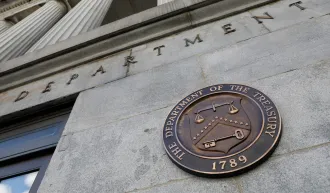When the Export-Import Bank Closed Up, U.S. Companies Saw Global Sales Plummet
A look back at the temporary shutdown of the export credit agency finds significant impacts on American companies.
May 03, 2024

A House Financial Services Committee hearing on the reauthorization of the Export-Import Bank in June 2015. | Jonathan Ernst
In recent years, export credit agencies have become a focal point of debate among policymakers and economists. These agencies, established by governments to facilitate international trade by providing assistance to companies, have come under scrutiny from critics who argue that they waste taxpayer money by predominantly benefiting large corporations that don’t face financial constraints.
However, a new study coauthored by Stanford Graduate School of Business finance professors Chenzi Xu and Adrien Matray challenges this narrative. Analyzing the impact of the temporary shutdown of the Export-Import Bank of the United States (EXIM) between 2015 and 2019, they find that companies relying on its support experienced a significant downturn in exports and saw their global sales plummet an average of 10% relative to similar firms.
This shock also led to a permanent reduction in EXIM-supported companies’ investments and employee headcount, underscoring the importance of trade financing. However, the study, published by the National Bureau of Economic Research, found no real difference in these companies’ return on assets. This finding challenges the prevailing notion that export credit simply bolsters profits without having a real impact on companies’ operations.
“Some people take a very dim view of export credit agencies, thinking that companies don’t need this support, considering it as corporate charity or a handout. However, our paper argues that these credit facilities serve a very important economic purpose,” says Xu, an assistant professor of finance.
Governments around the world have set up export credit agencies to help companies get financing for international trade when private sources are difficult to access. These agencies are ubiquitous in both advanced economies and developing countries. However, there’s disagreement about how much they help.
Proponents say they boost exports, create jobs, and help the domestic economy grow by filling gaps in private lending. Critics argue that they cause economic distortions, such as misallocating resources by extending taxpayer-funded support to companies that otherwise would be unable to export.
However, this notion is challenged by the new findings from Xu, Matray (an acting assistant professor of finance at Stanford GSB), and their colleagues Poorya Kabir and Karsten Müller of the National University of Singapore. Their paper shows that the decrease in global sales resulting from the shutdown of EXIM from 2015 to 2019 was mainly seen in firms with high returns to capital investment. This suggests that the agency wasn’t channeling resources to less-efficient firms.
Additionally, the paper finds that the EXIM closure caused a much bigger drop in sales — about five times higher — for companies that were already highly productive, based on their marginal revenue product of capital. This implies that the shutdown made it harder for money to flow to the most productive companies. And that could mean that cutting export credit subsidies might increase, rather than decrease, the misallocation of resources.
“Export credit agencies play a massive role in supporting companies facing financial obstacles in financing their exports. So there are huge potential economic consequences of curtailing export credit subsidies, as some critics have called for,” Xu says.
Closed for Business
The EXIM closed in 2015 after the U.S. Congress did not renew its charter. As a result, the value of the agency’s financial support to firms declined by almost 85% between 2014 and 2019. It wasn’t until late 2019 that the agency’s charter was renewed and support for exports resumed.
One of the key questions Xu and Matray’s study raises is why companies benefiting from EXIM support were so significantly affected by its closure. Their research attributes this impact to these firms being financially constrained, perhaps because they were already highly leveraged, making it difficult to replace EXIM support with private sector support.
Xu and her colleagues also find that EXIM might be filling a lending gap left by the private financial sector. “As an agency of the U.S. government, it can have better loan loss recovery than a private bank might,” she explains. “This makes it profitable for EXIM to finance trade even to very risky countries in which the private sector is unlikely to operate.”
The study’s implications go beyond the immediate impacts of EXIM’s closure, raising broader questions about the effectiveness of export credit subsidies and their role in supporting productivity and trade. The findings suggest that policymakers must carefully consider the ramifications of reducing support for export credit agencies, as it could lead to inefficiencies in resource allocation and, ultimately, hinder economic growth.
“Our paper also found that industries that depended more on EXIM support experienced a bigger decline in exports — implying that the decrease in exports at the firm level also had broader effects on entire industries, rather than just shifting market share among U.S. companies in favor of those supported by EXIM,” Xu says.
“Can governments boost exports by providing targeted trade financing?” Xu, Matray, and their coauthors ask. “The results in this paper… suggest that the answer is yes.”
For media inquiries, visit the Newsroom.
Explore More

China’s Steep Barriers for IPOs Come with Serious Economic Costs

Inside China’s Long March Toward Challenging the Dollar



